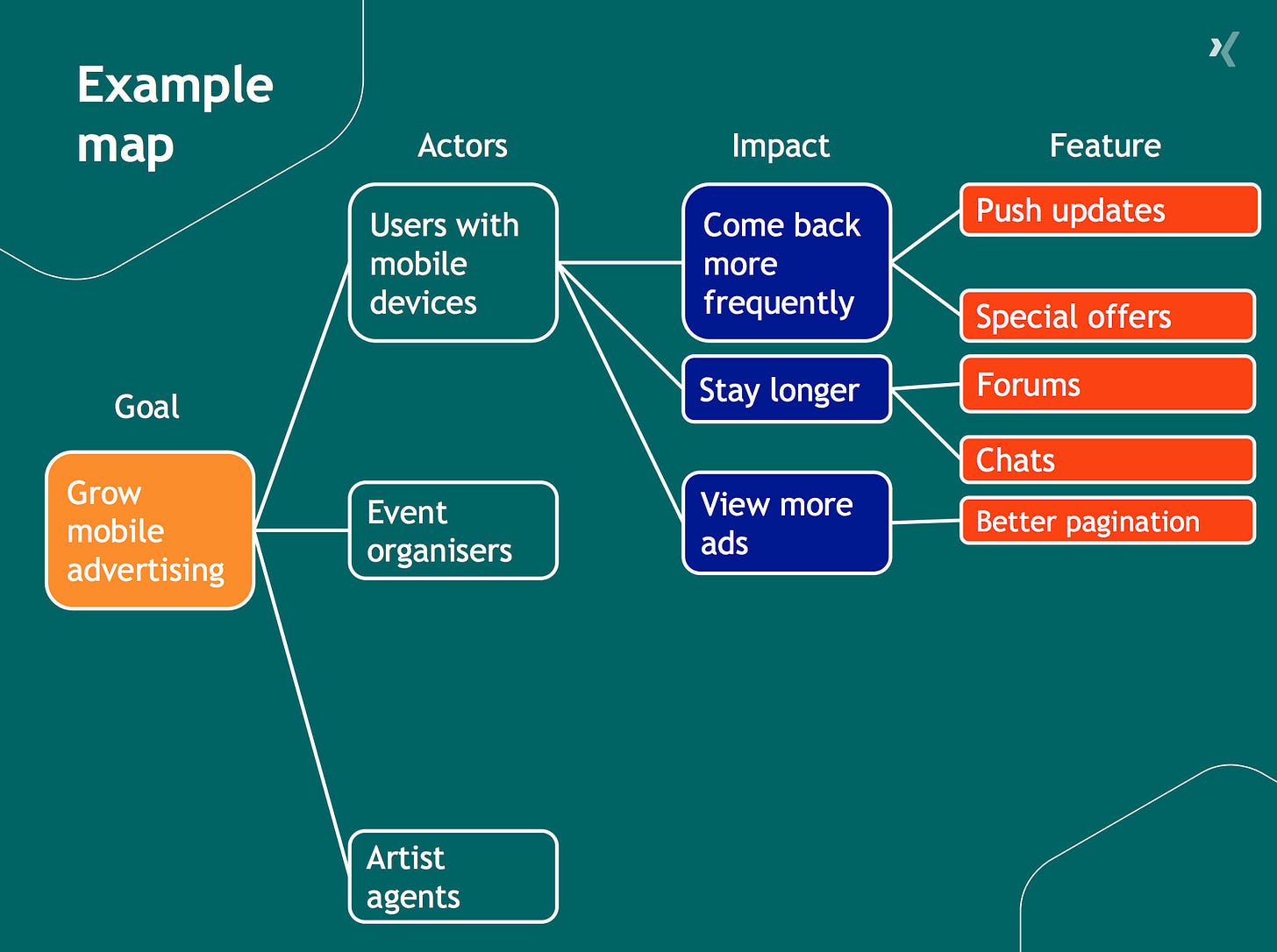Why am I upbeat about Impact Mapping?
One of my previous managers once passed a remark that I suffer from Shiny Object Syndrome. And that I always am distracted by a new framework, a new idea, a new phenomenon, or a new approach of doing things and that according to him was not always a good thing. Though I partially agree with his remark that the cost of being overtly curious is that you meet a lot of bad ideas. But that doesn't mean you stop being overtly curious and stop the habit of exploring them. It's only be exploring would you chance upon something really valuable. I chanced upon one such thing called Impact Mapping, which I firmly believe is not a flash in the pan but a very visual/graphic/goal-oriented way to approach and solve a problem.
The first time I heard about Impact Mapping was when I listened to a talk by Marc Kadish, Director, PM, Xing on frameworks applied at Xing. One of the slides that caught my attention was on Impact Mapping. The simplicity and its value was strikingly visible on the slide with the example of a goal - growing mobile advertising.

Source: http://www.working-products.de/content/2-programm/marc-kadish-der-rote-faden.pdf
And just as with any new topic, I wanted to find who is an expert on this. So, I looked up on the Internet and Christian Hassa’s name popped up who has delivered numerous talks on this. When I approached him to come by on my podcast and talk about it, he thankfully agreed.
Here is our hour long conversation on Impact Mapping.
What is impact mapping?
Impact mapping is a strategic planning technique. It prevents organisations from getting lost while building products and delivering projects, by clearly communicating assumptions, helping teams align their activities with overall business objectives and make better roadmap decisions.
An impact map is a visualisation of scope and underlying assumptions, created collaboratively by senior technical and business people. It is a mind-map grown during a discussion facilitated by considering the following four aspects:
Goal
The centre of an impact map answers the most important question: Why are we doing this? This is the goal we are trying to achieve.
Actors
The first branch of an impact map provides answers to the following questions: Who can produce the desired effect? Who can obstruct it? Who are the consumers or users of our product? Who will be impacted by it? These are the actorswho can influence the outcome.
Impacts
The second branch level of an impact map sets the actors in the perspective of our business goal. It answers the following questions: How should our actors’ behaviour change? How can they help us to achieve the goal? How can they obstruct or prevent us from succeeding? These are the impacts that we’re trying to create.
Deliverables
Once we have the first three questions answered, we can talk about scope. The third branch level of an impact map answers the following question: What can we do, as an organisation or a delivery team, to support the required impacts?These are the deliverables, software features and organisational activities.
Impact Mapping, an idea introduced by Gojko Adzi has already published a book on the subject.


